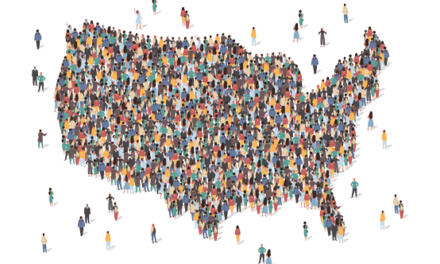Undergraduates are remarkably optimistic. They think American education is getting better and better. History is a tale of relentless progress over many decades.
The young haven’t given up on American education.
That’s the conclusion I drew from the final paragraphs of the essays 60 students wrote in November 2013. Nearly everyone finished their papers with cheerful endings. They earnestly said that “multiple attempts have made great strides” as Americans “keep pushing forward to success” and “always find a way to provide exactly what each person wants and needs out of their education.”
Those snippets are from the 22 papers on this question: “Why does the history of American education have so many controversies, conflicts, and disagreements? In a country so keen on education, why wasn’t there more agreement?” I did not ask them to comment on current conditions and future prospects, but 18 of them did. Of those 18, all but four were upbeat. Conflict had been useful, nearly everyone claimed. Controversy “assures that the best decisions are made.”
The students who chose a second essay question were even more sanguine. “The history of American education is, above all else, the story of the search for higher standards, but what “high standards” meant changed dramatically over time.” I asked if they agreed or disagreed, and nearly everyone agreed enthusiastically. All but one of the 20 essays asserted that standards steadily increased or even “rose immensely” and “evolved enormously.”
The third option invited skepticism. I offered a sweeping claim by Horace Mann: Education “throws open its doors and spreads the table of its bounty for all the children of the state … education … is the great equalizer of the conditions of man, the great balance wheel of the social machinery.” I asked students if education from 1865 on fulfilled Mann’s prophecy in the 1830s. In the 18 essays, five hedged their views. Much has been accomplished but “we still have a lot to do” because there is “room for improvement” and “a ways to go.” Ten students were confident that his prophecy had come true. We made “great strides” as “education equalized everyone.” Only three students emphasized persistent inequality and focused on racial, ethnic, and economic disparities.
How do I explain my students’ optimism? I don’t think they were merely repeating my lectures or parroting the readings. Perhaps they were repeating a style they learned in high school — finish a history paper with heartfelt proclamations of ceaseless improvement. But how many of them wrote five-page papers often enough to acquire that habit in high school?
Perhaps aspiring teachers are naturally optimistic. It’s unlikely that pessimists would major in education … but only half of my class majored in education, and the other students were just as chipper as the preservice teachers.
Here is another possibility, naïve as it might be: all the gloom and doom in media coverage of education hasn’t jaded the young. They haven’t given up hope. The fact that they are so optimistic is itself evidence of the progress they described in their papers.
ABOUT THE AUTHOR

Robert L. Hampel
ROBERT L. HAMPEL is a professor of education, University of Delaware, Newark, Del., and author of Fast and Curious: A History of Shortcuts to Education .










